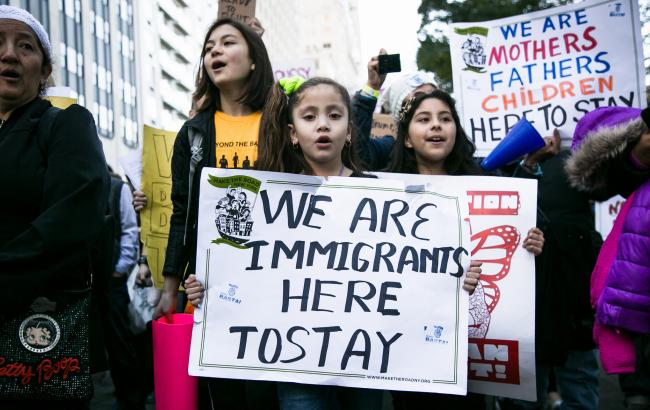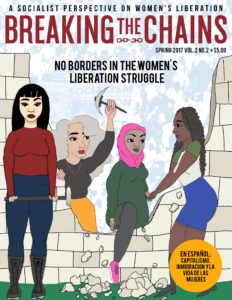
There are millions of immigrant workers in the United States. The United States economy is entirely dependent on the work of immigrant and U.S. born workers alike. All workers must work to survive. Workers are not paid the full value of their labor, and that is the source of capitalist profit. But, immigrant and U.S.-born workers are not treated equally. Undocumented immigrant workers, in particular, face state terror and increased exploitation because the U.S. legal system doesn’t recognize their equality with other workers. Instead, the right of the bosses to profit from that intimidation and exploitation is the basis for the laws that govern the U.S. system and the traditions that shape its economic relations.
The Trump administration is not the only U.S. presidential administration to target undocumented immigrant workers. It certainly has expanded on previous efforts to criminalize, dehumanize and terrorize immigrant workers. The administration is using racism, xenophobia and bigotry to mobilize a susceptible portion of the U.S.-born working class that has also seen its living standards only decrease over the last 40 years. The entire agenda of the Trump administration, however, targets all workers and the planet. The most vulnerable and oppressed are the hardest hit but all workers will suffer the consequences of the accelerated attacks on women, immigrants, unions, public education, government programs and the environment. That is, unless the Trump program is defeated.
In reality, the U.S. ruling class has no interest in removing immigrant workers entirely from the United States. If that were to occur, sections of the ruling class would mobilize their substantial resources against it. However, the intimidation campaigns ensure a section of the working class is kept in an acutely vulnerable state — compelled to accepting lower wages and reluctant to organize to better their working conditions.

Racism and xenophobia also serve as tools that pit more privileged workers, like white U.S.-born workers against more oppressed workers, like undocumented immigrant workers. Without such tools, united workers could otherwise be solid allies against the bosses, or even the system itself, which are responsible for low wages, poor working conditions and other forms of exploitation.
What does this have to with the struggle for women’s liberation?
Breaking the Chains is a socialist feminist magazine. In every nook and cranny of the magazine, we celebrate the organizing and victories of the feminist movement on issues that have typically been viewed as “women’s issues.” The many contours of women’s oppression — issues of women’s health care and gender-based violence for instance — are important. They must be understood, studied, and fought against. But we also recognize that there is a broader connection to be made as well. We understand very clearly how the struggle for women’s liberation must also take up the struggle against racism and the struggle for LGBTQ liberation.
Immigration and the struggle of immigrant workers, especially undocumented immigrant workers, is a feminist issue. Women are immigrant workers, and face particular forms of oppression and exploitation because of being women.
The answer to oppression is our organized resistance and our militant solidarity. The struggle for women’s liberation is intricately connected to the struggle for immigrant rights. We are united in our joint struggle for equality and for justice.
Oppression is systemic, it grows out of the capitalist system itself. It is not human nature or the way things have always been. It is a function of the social and economic relationships that are determined by the structure of the society we live in. We live in a class society in which one class of people exploits another much larger class of people.
We recognize a common enemy: the capitalist system and those in power, the capitalist class. This class, this system are obstacles to our liberation. While our response to oppression is resistance and solidarity, the ultimate solution to oppression is revolution.

